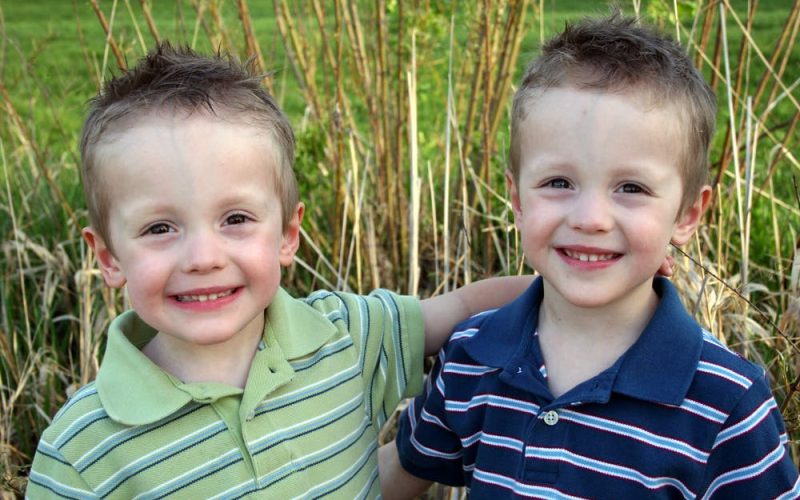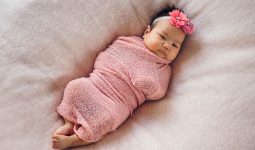People are intrigued by twins, and due in large part to developments in fertility research, there are more twins than at any other point in history.
In fact, in 2017, According to the Centers for Disease Control and Prevention ( CDC), 33 of every 1,000 births in the US were twins. The most common are identical and fraternal twins.
Identical twins are sometimes called monozygotic twins, which means one fertilized egg. They occur when one egg is fertilized by one sperm as normal, but the egg splits in two shortly afterward. Half of it develops into an infant.
Identical Twins are formed when one zygote, created with one egg and one sperm, is divided into two.
Instead of getting just one embryo — usually from one egg and one sperm — the outcome is two embryos. Each of these embryos develops as a separate fetus.
Because they came from the same egg and sperm, 100% of their chromosomes are identical. Being Identical Twins means that they have the same sex and the same genetic characteristics, such as hair and eye color.
However, factors in their environment, such as how much room they each had in their womb, can cause slight differences in appearance.
Identical twins are also known as identical twins because they essentially share the same genes. However, they are not necessarily genetically similar.
Although we once believed that mono-twins were genetically identical to the science we have today, the term might no longer be correct.
Identical twins are of the same sex (except in some very unusual cases below), share physical features, and may even have identical personalities.
What Causes Identical Twins to Happen?
o one knows what triggers the Identical twins. This is a field of ongoing research.
Identical twins do not (usually) run in families. This means that identical twins are created when something in the world causes a break or, probably, occurs randomly. (There are several isolated populations where identical twins seem more likely to occur, and there may be a genetic link, but this is uncommon, and a gene that raises the likelihood of Identical twins has yet to be identified.)
IVF research has some insight into how identical twins can develop. IVF embryos are more likely than naturally conceived embryos to be divided into identical twins.
Fertility doctors will pass only one embryo — in the hope of minimising the likelihood of non-identical twins — but identical twins may still occur, and more often than in the general population.
Researchers set cameras to take photographs every two minutes of embryo development to investigate. A fluid-filled cavity develops within the embryo during normal embryo development. It is known as blastocoel.
Even within the embryo, there is a set of cells known as the inner cell mass. Eventually, this array of cells may form the fetus.
In some instances, the blastocoel collapses on its own. This typically results in the death of the embryo. However, the embryo can survives at times.
What appears to happen in these situations is that the embryo dies on its own, allowing the inner cell mass to break into two. The two inner cell masses also contributed to the formation of twins.
It’s important to remember that we can’t know if this is how Identical Twins form in the womb. But it gives us insight into a mechanism that has been a total mystery until recently.
But Why Does This Happen More Often Than Not With IVF?
For one, the embryo is held in the laboratory in an artificial solution. Although scientists have done their best to make it as normal as possible, it is still not the same environment that an embryo will develop inside the reproductive system of a woman. This solution could increase the risk of collapse.
Second, there are differences of opinion as to when to move the embryo to the uterus of a woman. Transferring the embryo later appears to raise the likelihood of identical twinning marginally.
Twins Genetics
Identical Twins were once thought to share the very same DNA. But it’s not real.
For one, any time the cells divide, there is achance of mutations occurring. These mutations can happen as early as the first break. This is why identical twins are at higher risk of developing congenital diseases.
After the very first break, the individual masses of cells begin to separate on their own. There is a chance of mutation for each break.
At birth, the genetics of twins are very, very similar — but they are not identical. Over time, their genetic similarities appear to diminish. This is attributable to epigenetics — the theory of how our DNA affects the environment.
Some studies have shown that minor variations in DNA are more common in older identical twins than in very young identical twins. This can be because they spend more time apart and are often exposed to different environments.
Identical Twins, Just Different Sex, Huh?
While exceedingly rare, Identical Twins maybe two separate sexes. This goes back to the idea that genetic mutations can occur from the first break.
If an egg holds double X chromosomes (when a typical egg is expected to hold just one X chromosome) and is fertilized with a Y-sperm, you will get an XXY embryo. This is also known as Klinefelter Syndrome.
But what happens if the XXY embryo divides into Identical twins? You might end up with one twin with XX expression (female) and the other with XY (male). How unusual is this situation? It has only been identified four times in medical literature.
There is another (rare) way in which you can have identical twins with different chromosomes.
If you have an egg with one X chromosome (as it should be) and sperm with a Y-chromosome, you will usually have a child (XY).
If this embryo splits into twins, you’d get the same twin boys. However, one twin can contain only the X chromosome (usually written as XO) and the other XY chromosome.
Thus, one twin would be a girl (with a congenital condition known as Turner’s Syndrome), and the other would be a child.
All of this said these cases are so unusual that you can say that 99,999 percent of boy-girl twins are not identical twins.
Will the Family History of Identical Twins Raise the Likelihood of Having Them?
In contrast to common opinion, the chances of having Identical Twins are not related to the family background.
If there is more than one pair of identical twins in a household, it is more likely to be due to chance or external environmental factors — but not the household genetic background.
There are several tribal and scattered societies where twins appear to be in the family. (Or in the wider tribe, for that matter.) It remains unclear if biology or the climate is at play here.
Dizygotic twins — non-identical twins — live in families, however. Fertility drugs can also increase the risk of having twins.
Semi-identical Twins and Twins
Semi-identical or half-twins are an uncommon type of identical twins. This happens when two different sperm fertilize one egg. (This is another case where you can get two sexes, but these aren’t necessarily “identical” twins because you began with two and not one egg fertilizing sperm.)
Conjoined twins are another unusual form of Identical twins, where the twins don’t completely separate when the zygote divides. Multiple organs can be shared. Most conjoined twins die in the uterus or are stillborn.
In certain cases, the surviving twins can be surgically separated. This surgery is dangerous and can not always be tried or performed successfully.
The Identical Twins, Their Amniotic Bags, and Placentas
Most of the time, the Identical Twins have different amniotic sacks, but they share one placenta. The scientific term for this is monochorionic-diamniotic (or Mo-Di), and it occurs between 60 and 70 percent of the time with Identical twins.
Sharing one placenta raises the risk of pregnancy due to the likelihood of a twin-to-twin transfusion syndrome. Pregnancy should be monitored very closely if the Mo-Di twins are diagnosed.
Another option is for the twins to have a placenta and an amniotic bag of their own. This is known as dichorionic-diamniotic (or Di-Di) twins.
The chance of Di-Di pregnancy is lower than that of Mo-Di pregnancy. There is a myth that Di-Di twins are often fraternal (non-identical), but that is not true. Around 30% of the Identical Twins are Di-Di.10.
The riskiest combination is when twins have one amniotic sac and one placenta. This happens only in Identical twins and never with non-identical twins.
This is classified as monochorionic-monoamniotic (Mo-Mo) twins and is quite rare in just 5% of twin pregnancies.
With Mo-Mo twins, the greatest risk is that babies can become entangled in umbilical cords. There is also a chance of twin-to-twin transfusion syndrome and a higher risk of prematurity.
Early studies showed that only 50 per cent of Mo-Mo twins survived, but later studies found more promising results, with perinatal (pre-birth and post-birth) mortality rates close to 20 per cent.
How Do You Know Whether Your Twins Are Identical or Not?
The only way to know for sure whether your twins are the same is via a DNA test. There are hints and potential signs that twins could be identical (or not identical), but DNA testing is the only way to know for certain.
You should speak to your paediatrician about DNA testing, or there are a variety of genetic testing companies that can screen for you.
Your twins could not be monozygotic/identical if
- They’re twin boys/girls.
- They have different blood types.
- They look a lot different.
Your twins could be monozygotic/identical if
- They shared one placenta.
- They’re of the same sex and look really alike.
- Your twins are monozygotic/identical if they
They’re sharing an amniotic bag. DNA research shows that they are similar
References;
- How Monozygotic Twins Form + Interesting Twin Facts; verywellfamily
- how do you know whether your twins are identical; Yahoo Question
- Types of Twins: healthline








